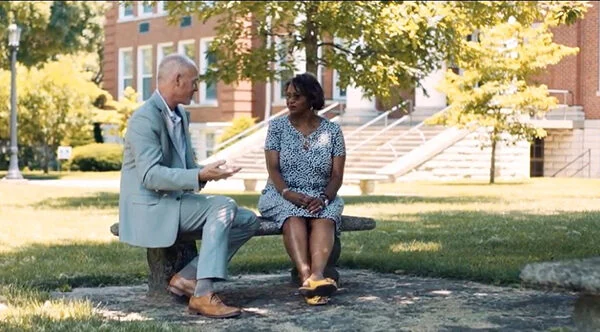[vc_row][vc_column][vc_column_text css=””]
According to AARP, aging in place is a goal for 3 out of 4 Americans aged 50 or more. These seniors and near seniors are willing to employ alternative solutions to facilitate this. The alternatives include home sharing (32%), building an additional or accessory dwelling unit (31%), and locating into villages that provide services that enable aging in place (56%). These communities become a source of support and engagement for residents and give a sense of grounding through memories of a long-time home environment.
The Role of Caregivers in Aging in Place
Seniors who want to reside in a community (aka, age in place) rather than seek residential institutions or nursing homes are mostly dependent on unpaid caregivers and family members for assistance with activities of daily living (ADL). These activities include laundry, self-care actions like bathing and dressing, meal preparation, and transportation. Medicare provides some long-term care services and supports (LTSS); however, the LTSS program falls far short of the need. While the aging population in America is rapidly increasing, lawmakers are slow to respond to the insufficient funding to increase the availability of LTSS for seniors choosing to age in place. The goal of LTSS is not to replace but to supplement the contribution of unpaid family and caregivers. The addition of a Medicare benefit to support family caregivers as they help their loved ones would enable more aging adults to successfully remain in their homes.
Technological and Low-Tech Support for Aging in Place
Technology has provided some solutions for caregivers, allowing caregivers to monitor their loved ones remotely while they stay engaged at work. Smart environmental controls and personal assistants have lightened the load of constant oversight but cannot replace the helping human touch. Nearly 60 percent of seniors who have seriously compromised mobility report being house or apartment-bound, while 25 percent of those seniors say they often remain in bed and do not dress daily.
Low-tech devices like canes, walkers, ramps, grab bars, shower seats, and raised toilets increase the level of accessibility and safety for aging in-place seniors; however, transferring in and out of bed and moving around their homes still provides notable difficulty for many. The senior who wants to age in place is typically independent-minded and, therefore, has trouble foreseeing a time when help is not a want but a need. Aging adults and their families need to plan to address changing physical capacities before an adverse health event such as an unintended fall or dementia challenge changes everything. While aging in place is a great goal for many seniors, it requires planning just as if they were planning on moving into an assisted living facility.
Addressing the Gaps in Care for Aging Adults
Johns Hopkins researchers report that 42 percent of older adults who have problems performing ADLs or are living with probable dementia receive no assistance at all from family, friends, or paid caregivers. That is a staggering number of unaided seniors. Additionally, twenty-one percent of seniors with a minimum of three chronic conditions and high needs received no assistance at all. LTSS, through Medicare, will have to make changes to meet the ever-increasing demand for human caregiving.
Approximately 60 percent of at-home seniors use at least one low-tech device, most commonly for bathing, toileting, or in-home movement, throughout their day, but their needs are multiple as they age. Unfortunately, Medicare does not cover the expenses of most of these nonmedical devices and services. The resulting problem is that seniors near or at the bottom of the income ladder go without assistance, human or device, putting their daily lives in a very precarious position. Hardships for these seniors on the razor’s edge include the inability to pay medical bills or prescription costs, utilities, or rent, and some resort to skipping meals to balance out their unaided lifestyle. At best, this is heartbreaking; at worst, it is inhumane.
The CHRONIC Care Act and Its Impact
The CHRONIC Care Act will allow Medicare Advantage plans to offer supplemental benefits for seniors to cover devices such as wheelchair ramps, grab bars, personal care, and transportation to chronically ill seniors. However, there are 21 million people who have needs to be met, and how this will be paid for is unclear. Meanwhile, the 39 million people enrolled in traditional Medicare are entirely left out of any supplemental benefit. Affordability for at-home care is a significant issue on a personal, family, and government level.
Innovative Community Initiatives to Support Aging in Place
Community Outreach Programs
Recognizing the limitations of Medicare and the heavy reliance on unpaid family caregivers, many communities are spearheading innovative outreach programs aimed at supporting older adults who choose to age in place. These programs often involve local volunteers and social workers who provide regular check-ins, help with grocery shopping, and transportation services to medical appointments. Such initiatives not only alleviate the burden on caregivers but also ensure that older adults remain connected to their local community, reducing feelings of social isolation and enhancing mental health issues.
Neighborhood Assistance Teams
Some neighborhoods have formed assistance teams that focus on creating safer environments for their senior residents. These teams work to improve street lighting, repair sidewalks to reduce tripping hazards and install community benches to offer resting places for older adults during their walks. By improving the infrastructure, these teams make the neighborhood more accessible and safer for seniors, promoting greater mobility and independence, thereby assisting with home maintenance difficulties and physical abilities.
Strengthening Family and Caregiver Support
Educational Workshops for Families
To better prepare family members for the challenges associated with aging in place, many organizations offer workshops that focus on teaching skills related to elderly care. These workshops cover a range of topics from basic medical care, managing medications, to understanding the emotional and physical health needs of aging adults. Education is key to empowering family caregivers and caregivers, enabling them to provide better support and anticipate the needs of their elderly loved ones, especially those showing signs of cognitive decline.
Support Groups for Caregivers
Caregiving can be a demanding and emotionally draining task. Support groups provide a platform for family caregivers to share experiences, seek advice, and find emotional solace among peers. These groups often facilitate discussions on coping strategies and stress management, which are crucial for maintaining the mental health and well-being of caregivers themselves, preventing caregiver burnout.
By integrating these sections, your blog post will offer a more comprehensive look at the support structures and community initiatives that complement technological and family-based solutions, enhancing the overall narrative about aging in place. This enhancement underscores the critical role of community support, in-home care, and long-term care solutions in addressing the growing needs of the aging population.
The Importance of Planning and Assistance
Caregivers and assistive low tech devices are an absolute necessity for seniors opting to age in place. The extent of the adjustments senior adults make as their needs become more profound are not well documented. As aging in place is a common strategy now, new solutions and programs must be explored to ensure successful aging.
If your strategy is to age in place, have a discussion early on with trusted counsel and family members to address some of the challenges you will eventually have to overcome. If we can assist you, please don’t hesitate to reach out to 859-544-6012.[/vc_column_text][/vc_column][/vc_row]


